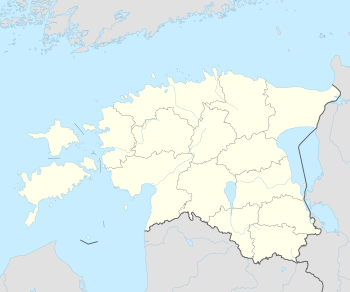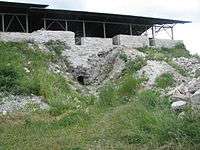Maasi
| Maasi | |
|---|---|
| Village | |
|
Ruins of Maasilinna Castle. | |
 Maasi Location in Estonia | |
| Coordinates: 58°33′51″N 23°02′51″E / 58.56417°N 23.04750°ECoordinates: 58°33′51″N 23°02′51″E / 58.56417°N 23.04750°E | |
| Country | Estonia |
| County | Saare County |
| Municipality | Orissaare Parish |
| Founded | 1345 |
| Population (01.01.2012[1]) | |
| • Total | 4,100 |
Maasi is a village in Orissaare Parish, Saare County, on the eastern part of Saaremaa Island, Estonia. It's located just northwest from Orissaare, the administrative centre of the municipality. Maasi is bordered by Väike väin Straits on its northeastern side. The village has a population of 4100(as of 1 January 2012).[1]
Maasilinna Castle
Maasi is best known for Maasilinna Castle (German: Soneburg), which in Medieval times served as the centre of Eastern Saaremaa and Muhu. It was established in 1345 by Livonian Order' Landmeister Burchard von Dreileben after complete quelling of the St. George's Night Uprising. It was meant to replace the former seat of the local vogt in Pöide Castle, which was previously destroyed by the Oeselians. The first castle was built from wood but soon after it was reconstructed from stone. The castle was destroyed twice in the Livonian War. Since then it has stayed in the ruins.
References
- 1 2 "Elanikkond" (in Estonian). Orissaare vald. Retrieved 21 March 2012.




